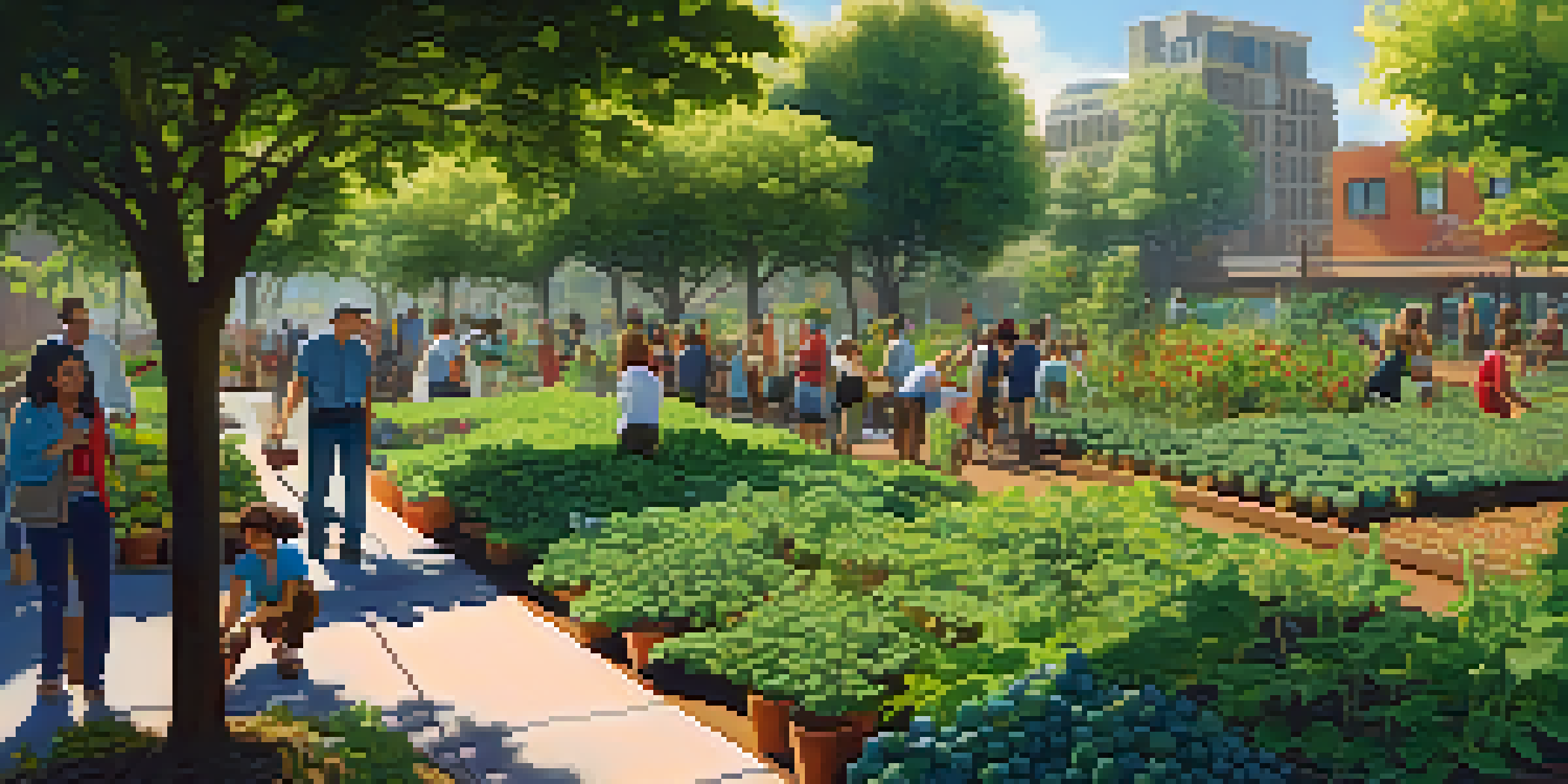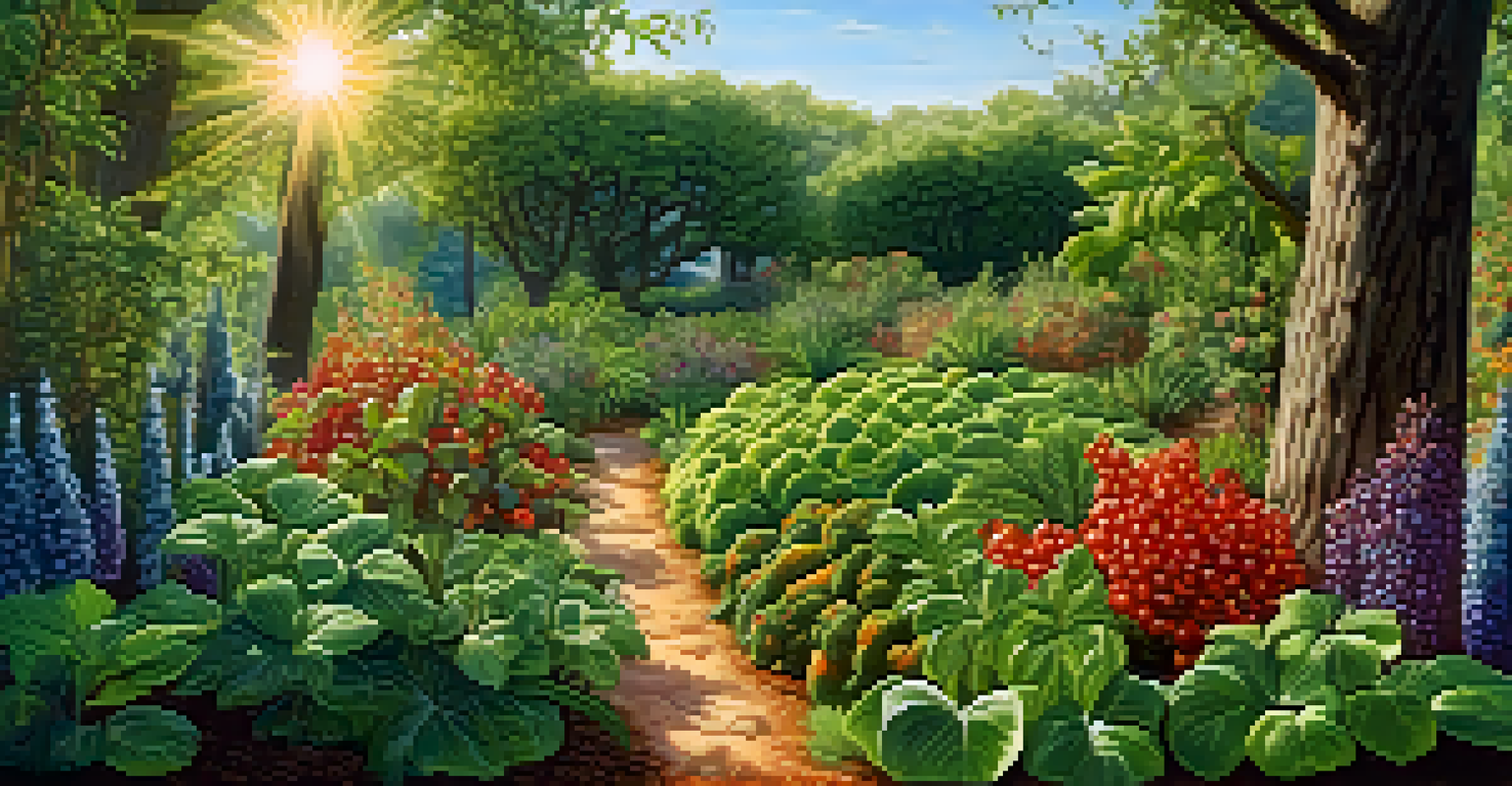Food Forests: Creating Edible Landscapes in Urban Areas

What is a Food Forest and Why Should We Care?
A food forest is a planned ecosystem that mimics natural forests, but instead of just trees, it focuses on producing edible plants. Imagine walking through a park where the trees bear fruit, and the bushes are filled with berries—this is the essence of a food forest. They provide not just food, but also habitat for wildlife, improve air quality, and enhance urban biodiversity.
The best time to plant a tree was twenty years ago. The second best time is now.
In urban areas, where space is often limited, food forests can transform neglected lots into vibrant green spaces. They serve as community hubs where neighbors can come together to plant, harvest, and share knowledge about gardening and sustainability. This fosters a sense of community, and everyone benefits from the bounty of fresh produce.
Moreover, food forests can help combat food deserts, where access to fresh, nutritious food is scarce. By cultivating these edible landscapes in cities, we can empower communities to take charge of their food sources, leading to healthier lifestyles and stronger local economies.
The Benefits of Food Forests for Urban Environments
Food forests offer numerous benefits that extend beyond just food production. They enhance urban ecosystems by supporting pollinators and other wildlife, creating a balanced environment. This, in turn, helps to improve the overall health of the city, making it a more pleasant place to live.

Additionally, these edible landscapes can help mitigate the urban heat island effect, where concrete and asphalt absorb and retain heat. By increasing green areas, food forests cool down the surroundings, making the city more comfortable during hot summer months. Imagine a neighborhood where you can escape the heat under the shade of a fruit tree!
Food Forests Enhance Urban Spaces
Food forests transform neglected urban areas into vibrant green spaces that provide food, habitat for wildlife, and community engagement.
Lastly, food forests can improve mental health by providing green spaces for relaxation and recreation. Studies show that spending time in nature reduces stress and boosts mood, making food forests not only a source of nourishment but also a sanctuary for city dwellers.
Designing Your Own Food Forest: Key Elements
Starting a food forest involves careful planning and understanding the needs of both plants and people. The key elements include layering, which means planting a variety of species at different heights, such as tall fruit trees, shrubs, and ground covers. This creates a rich ecosystem that maximizes space and yields.
In every walk with nature one receives far more than he seeks.
Soil health is another crucial aspect; healthy soil means healthy plants. Incorporating compost, mulching, and cover crops can nourish the ground, ensuring your food forest thrives. Think of it as setting a strong foundation for a house—without it, everything else may crumble.
Finally, consider the climate and local wildlife when selecting plants. Choose species that are well-suited to your environment and can coexist harmoniously. By taking these factors into account, you can create a resilient and productive food forest that flourishes over time.
Community Involvement: Building Together
Engaging the community is vital for the success of a food forest. Hosting workshops, planting days, and educational events can draw in volunteers and create a sense of ownership. When people invest their time and energy, they are more likely to maintain and protect the space.
Consider forming a community garden group or partnering with local organizations to spread the word and gather support. This collaboration can lead to shared resources, knowledge, and even funding opportunities. The more people involved, the more vibrant and diverse the food forest will become.
Community Involvement is Key
Engaging local residents through workshops and collaborations fosters a sense of ownership and ensures the sustainability of food forests.
Moreover, a food forest can serve as an educational platform for schools or youth programs, teaching the next generation about sustainability and healthy eating. By involving youth, we can inspire a love for nature and gardening that lasts a lifetime.
Challenges in Creating Food Forests in Cities
While the idea of food forests is appealing, there can be significant challenges to overcome. One of the main obstacles is land access; many urban areas have limited available space for new projects. It's essential to identify underutilized land, such as vacant lots or unused parks, that can be transformed.
Another challenge is navigating local regulations and zoning laws that may restrict gardening or agricultural activities in urban settings. Working closely with city officials and community leaders can help address these issues and pave the way for successful food forest initiatives.
Lastly, ongoing maintenance can be a concern. Without a dedicated group of volunteers or community members to care for the plants, food forests can quickly become overgrown or neglected. Establishing a sustainable maintenance plan right from the start is crucial to ensure the longevity of the project.
Success Stories: Food Forests Around the World
Across the globe, cities are embracing the concept of food forests with remarkable success. For instance, Seattle’s Beacon Food Forest has transformed a once-barren space into a thriving community asset, where residents can pick berries, apples, and herbs. It’s a beautiful example of how urban areas can reclaim land for food production.
In Detroit, the urban agriculture movement has led to the establishment of numerous food forests, helping to revitalize neighborhoods and provide fresh produce to local residents. These initiatives not only supply food, but also create jobs and foster community pride.
Overcoming Urban Challenges
Addressing issues like land access, regulations, and maintenance is crucial for the successful establishment of food forests in cities.
These success stories illustrate the potential of food forests to address urban challenges while promoting sustainability and community engagement. They inspire other cities to consider similar projects, showing that with creativity and collaboration, we can cultivate green spaces that nourish both people and the planet.
Getting Started: Your First Steps Toward a Food Forest
If you’re inspired to create a food forest in your community, start by gathering a group of like-minded individuals. Brainstorm ideas and assess potential sites together, ensuring everyone’s voice is heard in the planning process. Remember, teamwork often leads to the best outcomes!
Next, conduct research on local plants that thrive in your area and consider reaching out to local gardening clubs or agricultural experts for advice. They can provide valuable insights and help you select a diverse range of species that will flourish together.

Lastly, don’t forget to promote your project! Use social media, community boards, and local events to spread the word. Building excitement around your food forest will encourage more people to get involved, ensuring your edible landscape becomes a beloved part of the urban fabric.